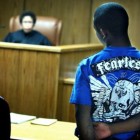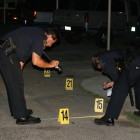
Illinois Enacts Law Against ‘Epidemic’ of Human Trafficking
|
By Maryam Jameel and Natalie Krebs
Illinois strengthened its legal arsenal against human trafficking this weekend when Gov. Pat Quinn signed House Bill 5278 into law. The new legislation aims to provide further protection and services for trafficking victims while also allowing prosecutors to crack down on pimps and other offenders. The law applies to both minors and adults, and shares a number of similarities with the federal Trafficking Victims Protection Act, passed in 2000. The TVPA and its subsequent reauthorizations created new categories of human trafficking crimes and provided protections and benefits for human trafficking victims. Similarly, the new Illinois law extends the statue of limitations for offenders and broadens the definitions of “serious harm” and “involuntary servitude.”
The signing came a day after the American Bar Association’s Juvenile Justice Committee hosted a panel to address the “epidemic” of juvenile sex trafficking in Chicago. While authorities confront traffickers for their offenses, it can be equally difficult to work with trafficked youth, many of whom don’t consider themselves victims of sexual abuse.










